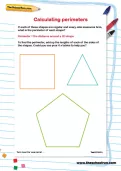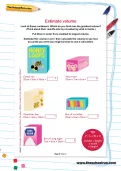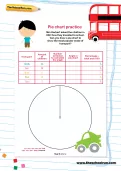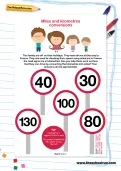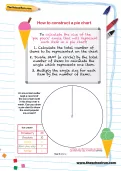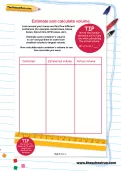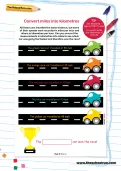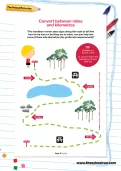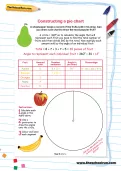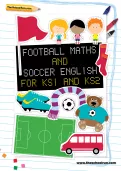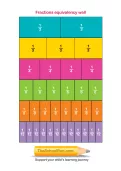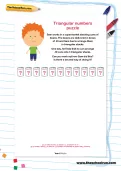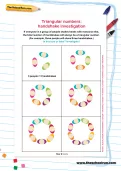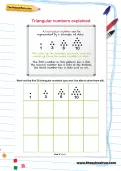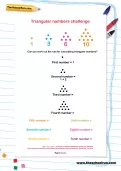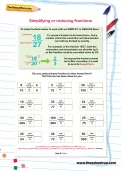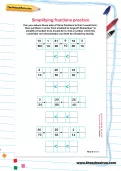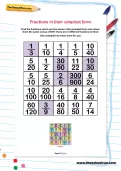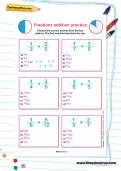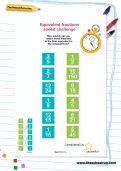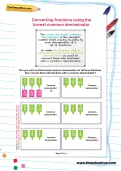Mrs Herbert asked the children in 6KH how they travelled to school. Can you draw a pie chart to show the most popular mode of transport?
or
Register to add to your saved resources
Already a subscriber? to view this content.
This family are off on their holidays. They have driven all the way to France. They are used to checking their speed using miles but in France the road signs are in kilometres! Can you help them work out how fast they can drive by converting the kilometres into miles? Your answers can be approximate.
or
Register to add to your saved resources
Already a subscriber? to view this content.
An ice-cream seller kept a record of the ice-cream sold in his shop over a week. Can you draw a pie chart to show the most popular ice-cream?
or
Register to add to your saved resources
Look at these containers. Which do you think has the greatest volume? (Think about their real-life size by considering what is inside.) Put them in order from smallest to largest volume. Estimate the volume in cm3, then calculate the volume to see how accurate you were.
or
Register to add to your saved resources
Look around your house and find five different containers (for example cereal boxes, tissue boxes, biscuit tins, DVD cases, etc.). Estimate each container’s volume in cm3 and put them in order from smallest volume to largest volume. Now calculate each container’s volume to see how accurate you were.
or
Register to add to your saved resources
Already a subscriber? to view this content.
All these cars travelled the same distance, but some of their speeds were recorded in miles per hour and others in kilometres per hour. Can you convert the measurements in kilometres into miles to see which car was going the fastest and therefore won the race?
or
Register to add to your saved resources
Already a subscriber? to view this content.
This marathon runner sees signs along the route to tell him how far he has run but they are in miles; can you help him convert them into kilometres (his preferred measurement)?
or
Register to add to your saved resources
Already a subscriber? to view this content.
A shopkeeper keeps a record of the fruits sold in his shop. Can you draw a pie chart to show the most popular fruit? Which fruit is the most popular?
or
Register to add to your saved resources
Already a subscriber? to view this content.
Make the most of World Cup fever and give grammar, division and spelling practice a football twist with our soccer-themed worksheets for KS1 and KS2 children.
or
Register to add to your saved resources
Already a subscriber? to view this content.
Help your child visualise which fractions are equivalent to 1, and how fractions are related to each other with an equivalency wall, free to download.
or
Register to add to your saved resources
Sam works in a supermarket stacking cans of beans. The beans are delivered in boxes of 49 and Sam has to arrange them in triangular stacks. One day, he finds that he can arrange 49 cans into 3 triangular stacks. Can you work out how Sam did this? Is there a second way of doing it?
or
Register to add to your saved resources
Already a subscriber? to view this content.
If everyone in a group of people shakes hands with everyone else, the total number of handshakes will always be a triangular number. Is this true or false? Investigate!
or
Register to add to your saved resources
Already a subscriber? to view this content.
A triangular number can be represented by a triangle of dots. Work out the first 20 triangular numbers (you won’t be able to draw them all!).
or
Register to add to your saved resources
Can you work out the rule for calculating triangular numbers?
or
Register to add to your saved resources
Already a subscriber? to view this content.
Can you reduce these fractions to their lowest form?
or
Register to add to your saved resources
Can you reduce these sets of three fractions to their lowest form, then put them in order from smallest to largest?
or
Register to add to your saved resources
Already a subscriber? to view this content.
Find the fractions which are the same in the simplest form and colour them the same colour.
or
Register to add to your saved resources
Already a subscriber? to view this content.
Now for some fractions addition practice! Choose the correct answer from the four options.
or
Register to add to your saved resources
Already a subscriber? to view this content.
How quickly can you match these fractions to their equivalent in the simplest form?
or
Register to add to your saved resources
Already a subscriber? to view this content.
Can you work out the lowest common denominator for all three fractions, then convert them into fractions with a common denominator?
or
Register to add to your saved resources
Already a subscriber? to view this content.
